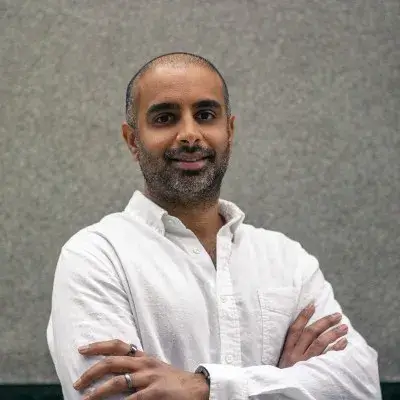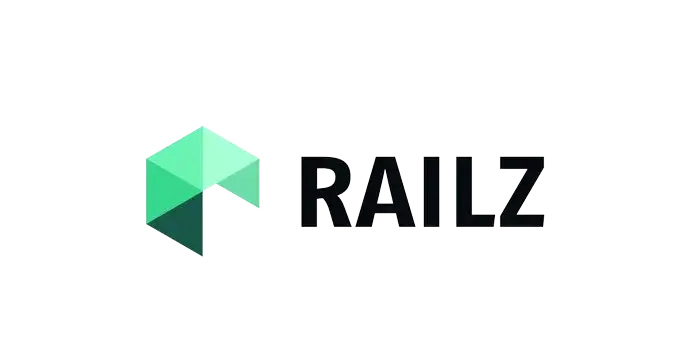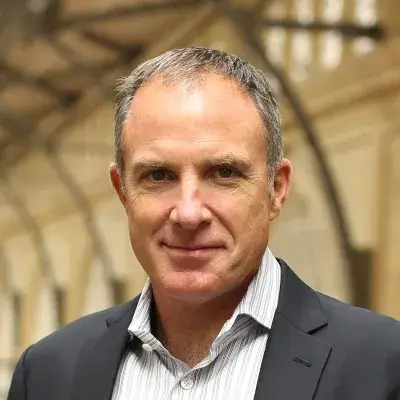Ready to launch your own podcast? Book a strategy call.
Frontlines.io | Where B2B Founders Talk GTM.
Strategic Communications Advisory For Visionary Founders
Conversation
Highlights
The Hidden History Behind Payment Innovation: Why Building Financial Infrastructure Takes Decades, Not Years
In 2009, when most founders were chasing social media and mobile apps, Shamir Karkal (Co-Founder of Sila) was tackling a different challenge: building one of the first neobanks. This wasn’t just about creating a better user interface – it was about understanding how centuries of financial infrastructure would shape the future of payments.
“We did everything wrong before we did it right,” Shamir recalls of his journey building Simple, one of the first neobanks. The biggest challenge wasn’t finding customers – it was building the technology and finding bank partners. This early experience revealed a crucial truth about fintech innovation: the hardest problems often lie in the infrastructure, not the user interface.
This insight becomes particularly relevant when you understand the scale of existing payment systems. “The card networks move about $9 trillion a year in the US. The ACH system moves about $73 trillion a year. And then Fedwire moves about three to $4 trillion a day,” Shamir explains. These numbers aren’t just impressive – they reveal why disrupting financial infrastructure is fundamentally different from disrupting other industries.
The persistence of payment systems tells an important story about innovation in financial services. “Every payment system that ever achieved broad adoption across multiple geographies in human history is still with us today,” Shamir notes. From coins invented in 600 BC Lydia to modern digital payments, successful payment systems don’t die – they evolve and find new niches.
This reality shapes how founders should think about innovation in financial infrastructure. While many startups promise to revolutionize payments overnight, the history suggests a different approach. Take the Federal Reserve’s new FedNow system, launching in 2023. As Shamir explains, “It actually needs to be adopted by 4800 banks and 5000 plus credit unions. They need to build it and integrate it into their systems and then make it available to customers.”
Even with rapid adoption, the math is sobering. “If you assume that RTP and Fed now grow at the same, whatever, 50% a year rate that they have, like, in the last year, and they keep that up forever and that ACH stops growing, it will still take 13 years for RTP and Fed Now to catch up with ACH,” Shamir calculates. “We’re talking 2035.”
This long-term perspective has implications for how founders should approach product development and market expansion. Rather than trying to build everything at once, successful fintech companies often start by solving specific problems well. “You just have to prioritize,” Shamir advises. “Do I invest a lot in building out wire functionality, which maybe only 5% of my customers are interested in? Or do I spend more… put it into building, like, whatever, a savings feature or something else that my customers care about more?”
The key to success in financial infrastructure isn’t just about technology – it’s about understanding the intricate web of systems and relationships that make finance work. As Shamir points out, “Everything about payments, especially, it’s not about the 99 or 99.9% of payments that work fine. It’s all about that .1% that have a problem.”
This focus on edge cases and complex problems explains why building financial infrastructure takes time. “Startups are not like an overnight success,” Shamir emphasizes. “It takes years, sometimes decades of building before you do become that overnight success and everybody hears of you. So it is 99% perseverance.”
For founders building financial infrastructure today, the lessons are clear. Success isn’t about replacing existing systems overnight – it’s about understanding how your innovation can solve specific problems while coexisting with and enhancing existing infrastructure. As Shamir’s journey shows, the most successful fintech innovations often come from founders who understand both the technology and the complex history of the systems they’re building upon.
Actionable
Takeaways
Identify and Address Infrastructure Gaps:
Look for opportunities to build platforms and tools that simplify and streamline the process of developing financial applications, addressing the pain points faced by innovators in navigating complex payment systems and regulatory requirements.
Focus on Narrow Use Cases and Expand Over Time:
When building fintech products, prioritize serving specific customer needs and use cases exceptionally well, rather than trying to match the breadth of functionality offered by traditional players from the outset. Expand your feature set gradually based on customer demand and strategic priorities.
Stay Informed About Payment System Developments:
Keep a close eye on the evolving payments landscape, including the launch of new real-time payment networks like FedNow, and adapt your product roadmap to support these systems as they gain adoption.
Persevere Through Industry Cycles:
Recognize that the fintech industry, like many others, is subject to hype cycles and market fluctuations. Stay focused on building and shipping products that solve real customer problems, and trust that success will come with time and consistent effort.
Prioritize Customer Experience in Payments:
When building payment functionality into your product, pay close attention to edge cases and error scenarios, striving to make it as easy as possible for customers to troubleshoot and resolve issues. A smooth payment experience is critical to customer satisfaction and trust.

































































































